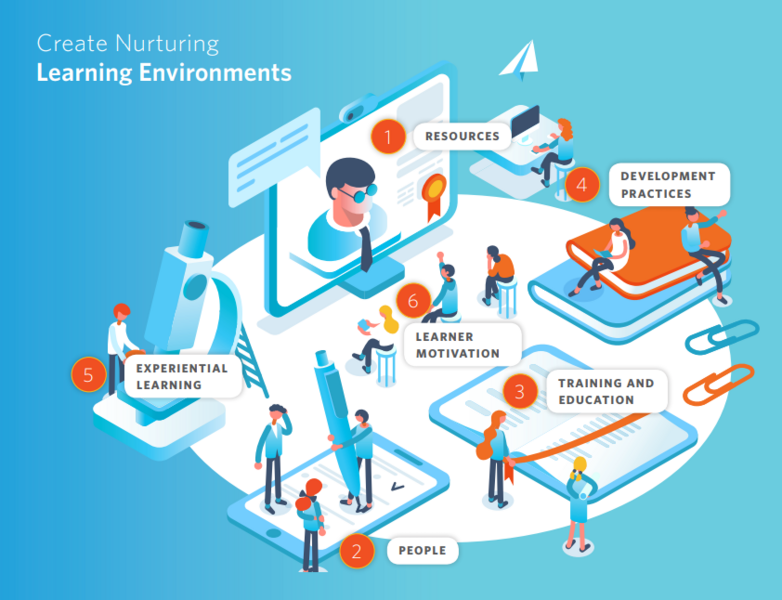ATD Blog
Trainers Guide to Delivering Exceptional Learning Experiences
Mon Oct 29 2018

Create Nurturing Learning Environments
As Catherine Lombardozzi explains in Learning Environments by Design, “Learning theorists and researchers have come to understand that we don’t so much ‘teach’ as we create an environment in which people can learn.” Six main components make up the environment, and learning and development professionals should keep these in mind when planning a training experience. The components include resources, people, training and education, development practices, experiential learning, and learner motivation.

1. Resources
Resources comprise such assets as performance support tools, job aids, podcasts, video chats, procedure manuals, and online databases. Resources are helpful for conveying explicit knowledge or providing just-in-time learning. According to Lombardozzi, “the trick is finding resources that are at the right level, high quality, and relevant to a particular context.”
2. People
Peer support systems, coaching, social media connections, and communities of practice form the people component. The depth of these interactions can vary a great deal, from a close, daily relationship in the workplace to following experts on Twitter, Lombardozzi explains.
3. Training and Education
These components include on-the-job training, courseware and seminars, certification or licensing programs, and follow-up exercises to the education event. Training can be in person, self-study, online, or a combination. “Research has shown that retention and application depend on relevance, deep engagement, practice, and feedback,” writes Lombardozzi.
4. Development Practices
Stretch-assignment management, after-action review practices, supervisor support and feedback, and career coaching are facets of development practices. Managers and the organization as a whole play a critical role in developing a culture where development practices are supported and encouraged.
5. Experiential Learning
Collaborating, creating personal notes and job aids, engaging in critical reflection, and learning by doing fall under this component. A trainer can promote and nurture these types of activities, “most especially by making self-assessment and reflection tools available to learners,” says Lombardozzi.
6. Learner Motivation
Learner motivation can be described as self-direction, confidence in the ability to learn, and a belief in the link between learning and performance. “Learners need to choose to learn, so without some degree of motivation, little learning can occur,” stresses Lombardozzi.
While several of these factors are tangible and within your control as a trainer, it is important to remember that many of them are not. Success also depends on the learners and their relationships with others, such as coaches or team members.
Source: Adapted from Lombardozzi, C. 2015. Learning Environments by Design. Alexandria, VA: ATD Press. www.td.org/magazines/ td-magazine/cultivating-valuable-learning-environments
You've Reached ATD Member-only Content
Become an ATD member to continue
Already a member?Sign In
